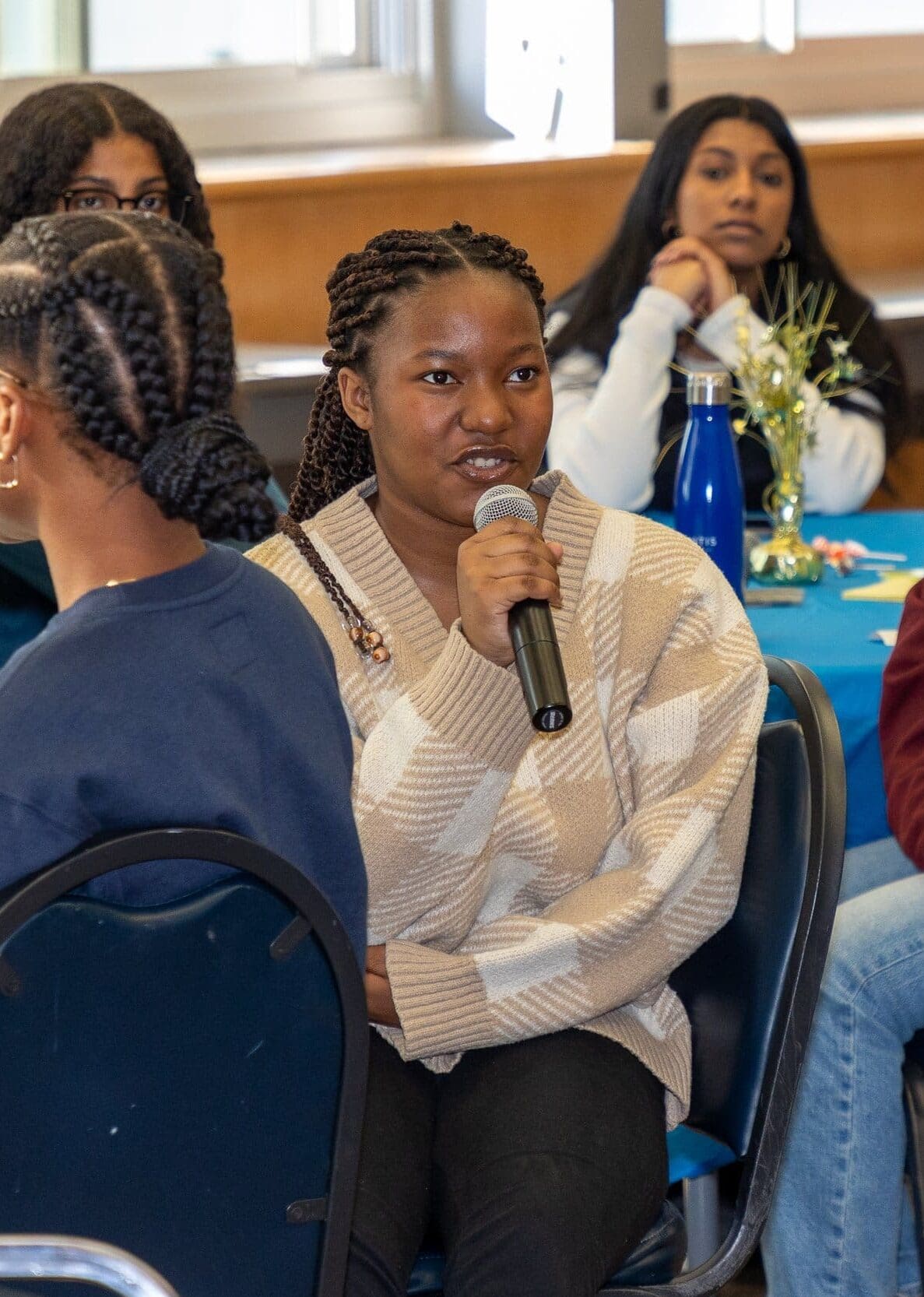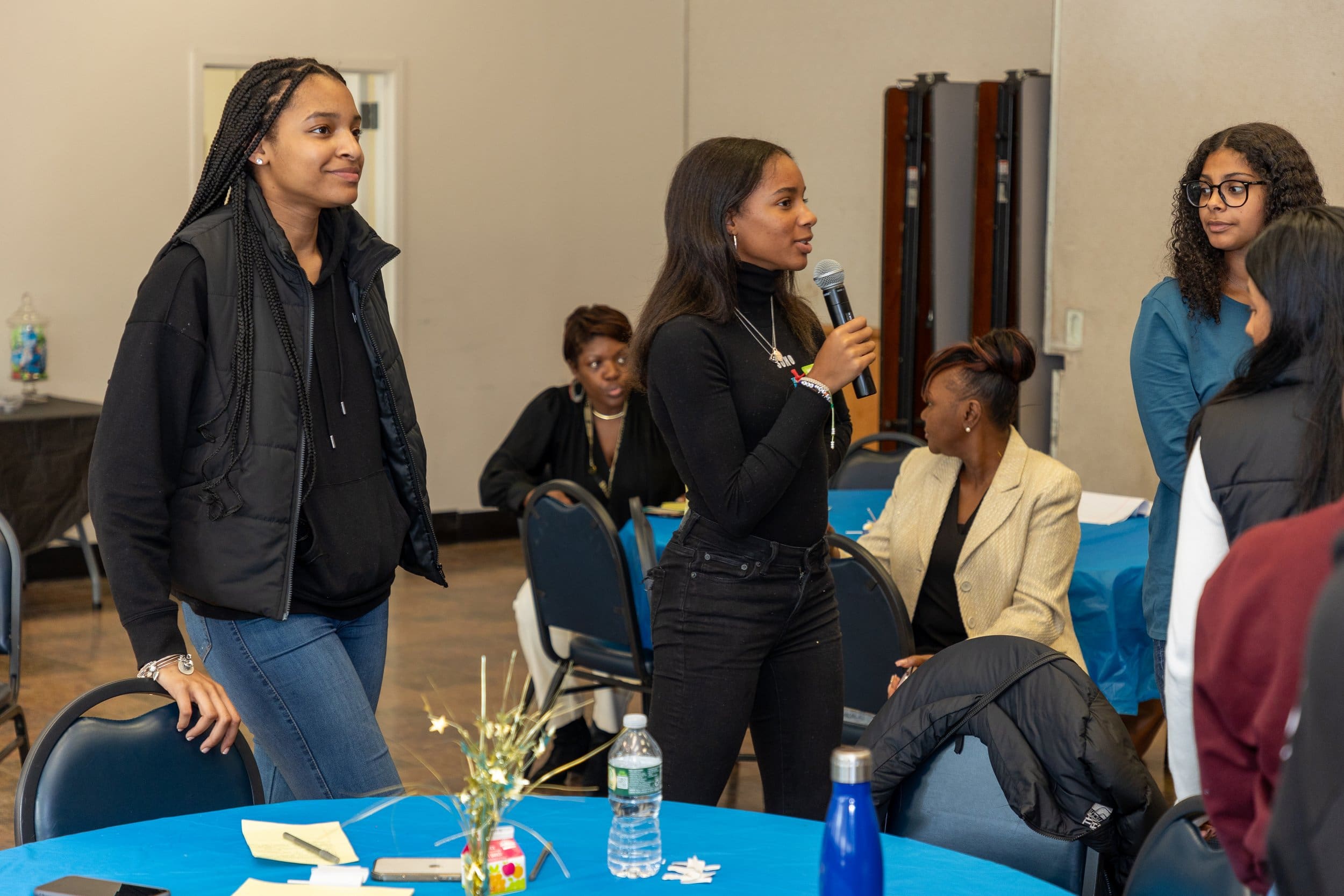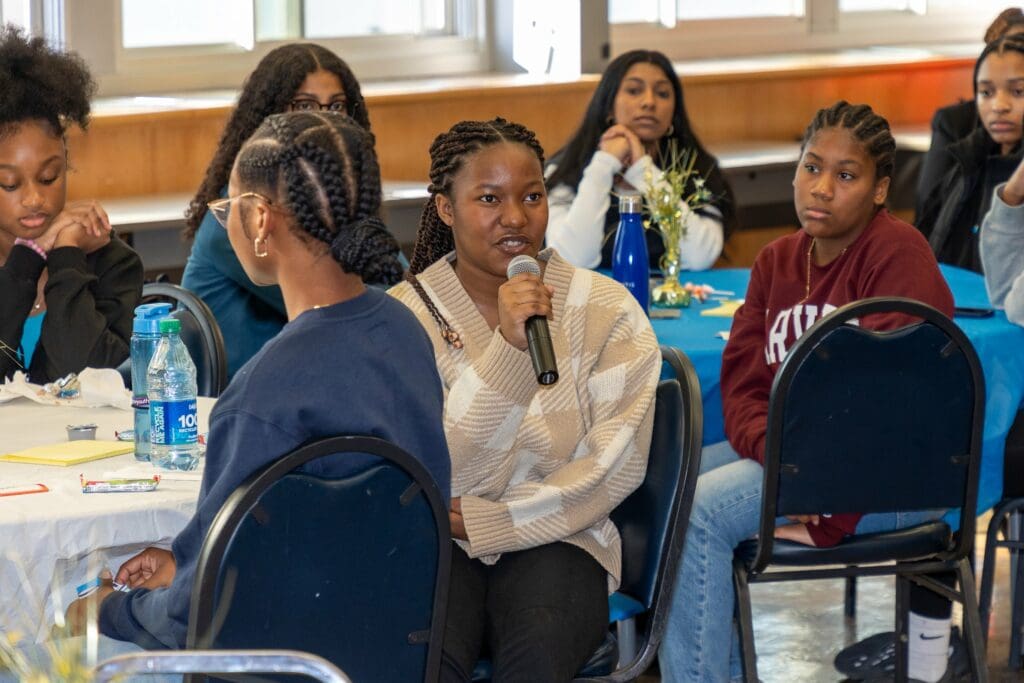DR. CHRISTINA KISHIMOTO | DECEMBER 2023
 Why are conditions the way they are for young ladies of color in our school systems? In a program offered nationally and held most recently in Long Island and in Brooklyn, New York, teenage girls from across four school districts came together to discuss equity policies affecting them within all of its contextual and historical complexities. What I love about this program – The High School Girls Policy Academy, is that young ladies of Color will always surprise you with how deep they will take you. They have a lot to say about issues that adults often assume they may be too young and too self-engrossed to be thinking about. Underestimate them, though, and they will always prove you wrong. The reality is that when you create a safe space where girls of color can be themselves authentically and you structure the opportunity to center and respect their voices, they will welcome you in. The question, therefore, is not whether they are ready to talk but whether we as decision-makers are ready to listen, to hear the truth in their own words about why things are the way they are for them as young women of color in their high schools and in their communities.
Why are conditions the way they are for young ladies of color in our school systems? In a program offered nationally and held most recently in Long Island and in Brooklyn, New York, teenage girls from across four school districts came together to discuss equity policies affecting them within all of its contextual and historical complexities. What I love about this program – The High School Girls Policy Academy, is that young ladies of Color will always surprise you with how deep they will take you. They have a lot to say about issues that adults often assume they may be too young and too self-engrossed to be thinking about. Underestimate them, though, and they will always prove you wrong. The reality is that when you create a safe space where girls of color can be themselves authentically and you structure the opportunity to center and respect their voices, they will welcome you in. The question, therefore, is not whether they are ready to talk but whether we as decision-makers are ready to listen, to hear the truth in their own words about why things are the way they are for them as young women of color in their high schools and in their communities.
We arrived on a Thursday morning and ran two separate closed sessions for selected girls at our host sites, first in a district in Long Island and on Friday at a high school in Brooklyn. As facilitators of this policy engagement experience, we left changed. As women educators of color, we were invited into their space, their school, their friendship circles…it was important for us to ensure that the girls gave us permission to join them. We dared to ask them to trust us and to allow us to walk them through an empowerment process to explore the concepts of equality, equity, and justice in their school, their community, their country. They sat up straight at this “ask” and opened their hearts to this conversation with an evident hunger to be engaged. We found a beautiful community of young women eager to be heard. They had so much to say that after the program, when they had left the room, we sat down, absorbing what we had just experienced, allowing the waves of emotions to carry us to a place of deep wondering. Where do we go from here? They trusted us, now what will we do?
We asked the young ladies to explore the difference between equality and equity, and they unfolded their stories, showing how much they think about these issues, from experiences inside their schools to national policy agendas. They told stories about gentrification, how their neighborhoods were not fixed up until White families began to move in. They talked about gender inequality in pay and career opportunities and wondered about the eventual impact on them as they enter the job market. They talked about long-standing and frustrating school matters such as unequal school facilities depending on whether you are in a predominantly Black school or a predominantly White school within the same school system.
 They also talked about the roles of congressional members, governors, and mayors making decisions about topics that matter to them, such as a woman’s right to make her own decisions about her body, controls on curriculum, and what they are allowed to or not allowed to learn about their own culture and history at school, and they discussed the ignored continued inequities on the playing fields with girls sports still undervalued compared to boys sports despite advancements in the law. As we explored what they wanted to talk about within the umbrella of equality and equity, they brought in citations from their AP Black History course, from the national media, to quotes from leaders in their own communities. They demonstrated how deeply they both hear and understand. They were clear that they understood policy in the context of identity – their multiple identities. Whether we structure these opportunities for their voices or not, young people are thinking about the difficult social, political, and economic issues that we are facing as a nation and the racialized and gendered context in which they exist.
They also talked about the roles of congressional members, governors, and mayors making decisions about topics that matter to them, such as a woman’s right to make her own decisions about her body, controls on curriculum, and what they are allowed to or not allowed to learn about their own culture and history at school, and they discussed the ignored continued inequities on the playing fields with girls sports still undervalued compared to boys sports despite advancements in the law. As we explored what they wanted to talk about within the umbrella of equality and equity, they brought in citations from their AP Black History course, from the national media, to quotes from leaders in their own communities. They demonstrated how deeply they both hear and understand. They were clear that they understood policy in the context of identity – their multiple identities. Whether we structure these opportunities for their voices or not, young people are thinking about the difficult social, political, and economic issues that we are facing as a nation and the racialized and gendered context in which they exist.
One young lady helped us visualize her local experience with inequity with a story about her everyday bicycle ride to and from school. She encouraged us to start off with her from her home in her family’s part of town in a neighborhood of largely Black families. She invited us to feel the bumps of the uneven roads, the potholes, and the vibrations generated by a surface of mixed materials inefficiently patched over the years. As she got closer to the school, the neighborhoods changed. There were more White families and even a different police station for that community. The shaking of the tires ceased as the roads became more consistent, with smoother newly paved surfaces. Police were friendly and visible as school children arrived. This young lady equated her bicycle ride to the racialized inequities she lives every day.
There are three key observations from this event that I want to highlight with the goal of helping us as educational leaders to think differently about how we structure opportunities for girls of color.
Create a Welcoming Space Without Controlling Narrative
First of all, let’s ask ourselves whether, as educational leaders, we are afraid to listen closely to girls of color. Afraid of what they will say about the world we have built for them? Are we stubbornly trying to fit the story of our generations onto this generation’s place in history? Are we holding our girls back because we are not ready for their knowledge, their power, their leadership? They are so hungry for the embrace of a listening ear, a sincere heart, and an empowering word. The participants seem to be saying that the challenge is finding adults who understand them and their experiences, finding a welcoming space where they share their fears, frustrations, questions, and need for allyship without the pressure of exactness of words that we hold them to instead of just seeking to listen and understand.
Support Girls of Color to Engage in Policy Voice
Second, we need to raise our expectations of girls of color to be able to engage in policy empowerment. When facilitators set the tone in a learning environment that lets the girls know that they will choose how they want to engage, we give the girls the opportunity to design their role within the learning space instead of limiting them to categories we bring in with us. Black and Brown girls have too many biases thrust upon them that silence their authentic voices. Too often, we forget their youth and innocence and assume an adultness that simply is not there at the tender ages of fourteen to seventeen. Research refers to this, particularly as the adultification of Black and Brown girls. This only causes harm.
Allow Girls of Color to Identify Their Own Solutions
Third, we need to allow our girls to talk about the equity policy issues that impact them and their families and friends. It was evident in the girls from all four districts that they had several great opportunities to engage in rigorous curriculum, but they were ready for more – for the opportunity to apply their learnings inside and outside of the school to elevate personal voice and personal narrative towards policy action. The students were asked to consider, What do I want to do about these policy matters that impact me? What should we collectively do when empowered decision-makers are making inequitable policy decisions that harm my community?
 What we learned in those two days of engagement is that our young ladies of color are telling us: let us show up as ourselves; let us speak up for ourselves using our own terminology; let us tell you what the important issues are to us. Give us the space to tell you why we are sometimes disappointed, hurt, and angry. See us. Hear us. Respect us. Let us talk. Support us as we design our own futures. Let us find the solutions to heal our communities and support us in this work. Empower us to lead and, most importantly, love us for who we are.
What we learned in those two days of engagement is that our young ladies of color are telling us: let us show up as ourselves; let us speak up for ourselves using our own terminology; let us tell you what the important issues are to us. Give us the space to tell you why we are sometimes disappointed, hurt, and angry. See us. Hear us. Respect us. Let us talk. Support us as we design our own futures. Let us find the solutions to heal our communities and support us in this work. Empower us to lead and, most importantly, love us for who we are.
*The New York cohort was co-facilitated by Dr. Christina Kishimoto and Dr. Alicia Thompson of the Voice4Equity team and Ronique Hicks and Nafisa Basir of the Discovery Education team.
Voice4Equity in partnership with Discovery Education, offers the High School Girls Policy Academy to districts who are committed to elevating the voices of their girls of color using a policy empowerment construct. Are you a Superintendent or Principal who values equity and the empowerment of girls of color? If you are interested in hosting this program at your location, contact either Dr. Alicia Thompson at Alicia@Voice4Equity.com or Ronique Hicks at RHicks@discoveryed.com. Several opportunities are available for a fully underwritten session at your school/district.
“The Girls Policy workshop provided our students with an understanding of how to shape policy that impacts their lives. Dr. Kishimoto and Dr. Thompson facilitated a powerful discussion about equity, social change, and issues our girls are facing today. The facilitators created a safe space for girls to own their power.”
— Monique Darrisaw-Akil, Uniondale School District

